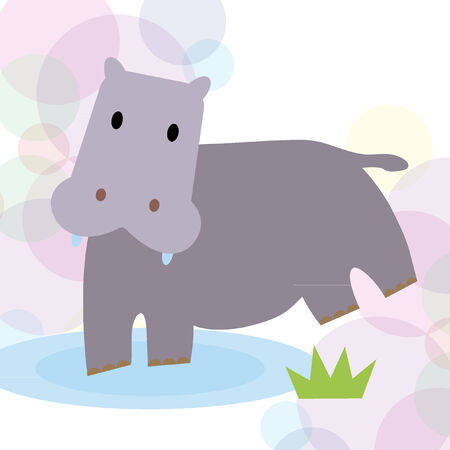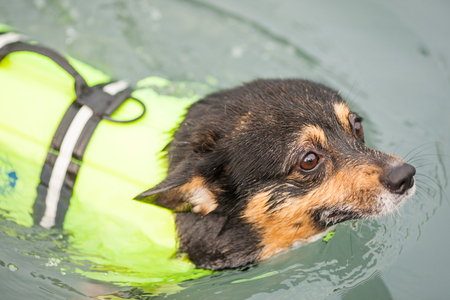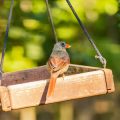1. Introduction to Water Features in Exotic Pet Enclosures
Water features have become an increasingly popular addition to exotic pet enclosures, providing both aesthetic appeal and functional benefits for a variety of species. Many pet owners incorporate elements like ponds, waterfalls, and misting systems to create a more natural and enriching environment for their pets.
Common Water Features in Exotic Pet Enclosures
Exotic pets, including reptiles, amphibians, and certain birds, often thrive in habitats that mimic their natural environments. Water features play a crucial role in achieving this balance by maintaining humidity levels, providing drinking water, and supporting behavioral enrichment.
Ponds
Ponds are widely used in enclosures for aquatic and semi-aquatic species. They serve as a water source for drinking and bathing while also allowing animals like turtles and amphibians to swim.
Waterfalls
Waterfalls not only enhance the enclosure’s visual appeal but also help with aeration and circulation of water. They can prevent stagnation and improve water quality while creating a calming ambiance.
Misting Systems
Misting systems are essential for maintaining humidity in enclosures that house tropical species such as chameleons or dart frogs. These automated systems spray fine water droplets at scheduled intervals to ensure the right moisture levels.
Growing Popularity Among Pet Owners
As awareness of animal welfare increases, more pet owners are investing in high-quality enclosures with naturalistic setups. Water features contribute to better hydration, thermoregulation, and overall well-being of exotic pets. Additionally, they provide an engaging experience for pet owners who enjoy observing their animals in a more natural habitat.
Comparison of Common Water Features
| Water Feature | Main Benefits | Commonly Used For |
|---|---|---|
| Ponds | Provides drinking water, swimming area, and enhances enclosure aesthetics | Turtles, amphibians, fish |
| Waterfalls | Improves water circulation, prevents stagnation, adds visual appeal | Reptiles, amphibians |
| Misting Systems | Maintains humidity levels, supports hydration needs | Tropical reptiles (e.g., chameleons), amphibians |
The integration of water features into exotic pet enclosures is not just about aesthetics—it plays a critical role in ensuring the health and comfort of the animals. As more pet owners recognize these benefits, the trend of incorporating ponds, waterfalls, and misting systems is expected to continue growing.
Benefits of Water Features for Exotic Pets
Water features play a crucial role in exotic pet enclosures, providing multiple benefits that enhance their overall well-being. From improving hydration to encouraging natural behaviors, water elements contribute to a healthier and more stimulating environment for various species.
Improved Hydration
Many exotic pets rely on water sources beyond just a standard water bowl. Running or misted water can encourage drinking, ensuring proper hydration. Some species, like chameleons, prefer licking droplets from surfaces rather than drinking from a dish.
Supporting Natural Behaviors
Exotic animals often have specific instincts tied to water. Water features allow them to express these natural behaviors, leading to better mental and physical health. For example:
| Animal Type | Natural Behavior |
|---|---|
| Turtles | Swimming and basking |
| Frogs | Soaking and hiding in water |
| Aquatic Snakes | Hunting prey in water |
| Lizards (e.g., Water Dragons) | Diving and cooling off |
Regulating Humidity Levels
Certain exotic pets require high humidity levels to stay healthy. Amphibians, reptiles, and tropical species depend on moisture-rich environments to maintain proper skin conditions and respiratory function. A well-placed water feature helps regulate enclosure humidity more effectively than manual misting alone.
Creating Enrichment Opportunities
A dynamic environment is essential for an exotic pet’s well-being. Water features introduce movement, sound, and texture variations that keep pets engaged. They provide opportunities for exploration, exercise, and even hunting simulations for certain species.

3. Potential Risks and Challenges
While water features can greatly enhance an exotic pet’s enclosure, they also come with certain risks and challenges that need to be carefully managed. Without proper maintenance, these features can become hazardous rather than beneficial. Below are some of the key concerns to be aware of.
Bacteria and Algae Buildup
Stagnant or poorly maintained water can quickly become a breeding ground for harmful bacteria and algae. This can lead to infections, skin issues, and even respiratory problems for some species. Regular cleaning and filtration are crucial to keeping the water safe for your pet.
Drowning Hazards
Not all exotic pets are strong swimmers, and some may struggle if they accidentally fall into deep water. Small reptiles, amphibians, or young animals are especially vulnerable. Ensuring that water areas have shallow sections or escape ramps can help prevent accidental drownings.
Maintaining Water Quality
Keeping water clean and safe requires consistent effort. Factors such as uneaten food, waste, and evaporation can alter the water’s quality over time. Regular monitoring and filtration are necessary to maintain optimal conditions.
Common Water Quality Issues and Solutions
| Issue | Potential Problem | Solution |
|---|---|---|
| Bacteria buildup | Can cause infections or illness | Use a proper filtration system and clean regularly |
| Algae growth | Makes the enclosure unsanitary | Limit direct sunlight exposure and clean frequently |
| Water contamination | Affects pet health | Change water regularly and remove debris promptly |
| Poor oxygen levels | Affects aquatic species survival | Add aeration or small water movement features |
Impact on Humidity Levels
A water feature can significantly affect the humidity inside an enclosure. While some exotic pets thrive in higher humidity environments, others may suffer from excessive moisture leading to respiratory issues or mold growth. Monitoring humidity levels with a hygrometer is essential to ensure they stay within a safe range for your pet’s species.
4. Best Practices for Safe and Effective Implementation
Adding a water feature to an exotic pet enclosure can greatly enhance your pet’s environment, but it’s essential to implement it correctly to ensure safety and effectiveness. Below are the best practices for selecting, installing, and maintaining water features to minimize risks and maximize benefits.
Selecting the Right Water Feature
Choosing the appropriate water feature depends on your pet’s species, size, and habitat needs. Consider these factors when making your selection:
- Size and Depth: Ensure the water feature is appropriately sized for your pet. Some animals need shallow pools, while others may require deeper water.
- Material Safety: Use non-toxic materials that won’t leach harmful chemicals into the water.
- Accessibility: Make sure your pet can enter and exit the water easily to prevent accidental drowning.
Proper Installation Techniques
A poorly installed water feature can lead to leaks, bacterial growth, or even injury. Follow these installation tips:
- Stable Placement: Securely position the water feature to prevent tipping or spills.
- Avoid Electrical Hazards: If using pumps or filters, ensure all electrical components are safely positioned away from direct contact with pets.
- Natural Integration: Blend the water feature with natural elements like rocks or plants to create a comfortable environment.
The Importance of Filtration Systems
A good filtration system helps maintain clean and safe water by removing debris and harmful bacteria. Below is a comparison of different filtration types:
| Filtration Type | Benefits | Best For |
|---|---|---|
| Mechanical | Removes solid waste and debris | Turtles, amphibians, fish |
| Biological | Promotes beneficial bacteria growth | Aquatic reptiles and amphibians |
| Chemical | Eliminates toxins and odors | Ponds and large enclosures |
Regular Cleaning and Maintenance
A consistent cleaning routine prevents algae buildup and bacterial contamination. Follow these maintenance steps:
- Daily Checks: Remove uneaten food and visible debris from the water.
- Weekly Cleaning: Change a portion of the water and scrub any surfaces where algae may grow.
- Monthly Deep Clean: Fully replace water, clean filters, and inspect for potential hazards.
Avoiding Common Water Feature Issues
Mistakes in water feature implementation can cause stress or health issues for exotic pets. Be aware of these common problems:
- Poor Water Quality: Regular testing ensures safe pH levels and prevents harmful bacteria buildup.
- Lack of Proper Drainage: Stagnant water can become a breeding ground for parasites.
- No Escape Route: Ensure that animals have easy exits from deep or slippery areas.
A well-maintained water feature enriches your exotic pet’s habitat while keeping them healthy and happy. By following these best practices, you can provide a safe, clean, and stimulating environment tailored to their needs.
5. Types of Exotic Pets That Benefit Most from Water Features
Water features can greatly enhance the health and well-being of many exotic pets. Some species rely on water for hydration, humidity regulation, or even hunting and swimming. Below are some exotic pets that thrive with water features and how to design their enclosures accordingly.
Amphibians
Amphibians, such as frogs, salamanders, and newts, require high humidity and access to water for survival. A well-maintained water feature helps them stay hydrated and provides an environment similar to their natural habitat.
Key Considerations:
- Shallow Pools: Amphibians need easily accessible water sources without deep areas where they could struggle.
- Filtration: Clean water is essential to prevent bacterial growth that could harm sensitive amphibian skin.
- Humidity Control: Misting systems or foggers can help maintain appropriate moisture levels.
Reptiles
Certain reptiles benefit significantly from water features in their enclosures. Species like turtles, crocodilians, and some snakes require water for hydration, soaking, and even hunting.
Key Considerations:
- Basking Areas: Semi-aquatic reptiles need dry land for basking to regulate body temperature.
- Water Depth: Ensure appropriate depth based on the species—turtles may need deeper pools while some lizards prefer shallow water.
- Water Movement: Some reptiles thrive with gentle water circulation to keep their habitat clean.
Certain Birds
Many exotic birds, such as ducks, swans, and parrots, enjoy interacting with water. Whether it’s for bathing or drinking, a well-placed water feature enhances their environment.
Key Considerations:
- Bird Baths: Shallow pools allow birds to clean themselves while preventing drowning risks.
- Misting Systems: Tropical birds benefit from misting systems that simulate rainforest conditions.
- Flowing Water: Moving water encourages birds to drink more often and helps keep the area cleaner.
Comparison of Water Feature Needs by Exotic Pet Type
| Exotic Pet Type | Main Benefit of Water Feature | Recommended Water Feature |
|---|---|---|
| Amphibians (frogs, newts) | Hydration & Humidity Regulation | Misting system, shallow pools with filtration |
| Reptiles (turtles, crocodilians) | Basking & Hunting | Pools with basking spots & gentle circulation |
| Certain Birds (parrots, ducks) | Bathing & Drinking | Bird baths, misting systems, flowing water sources |
Selecting the right type of water feature for your exotic pet ensures a healthier and more naturalistic enclosure. By understanding their specific needs, you can create an ideal environment that mimics their native habitat while promoting overall well-being.


